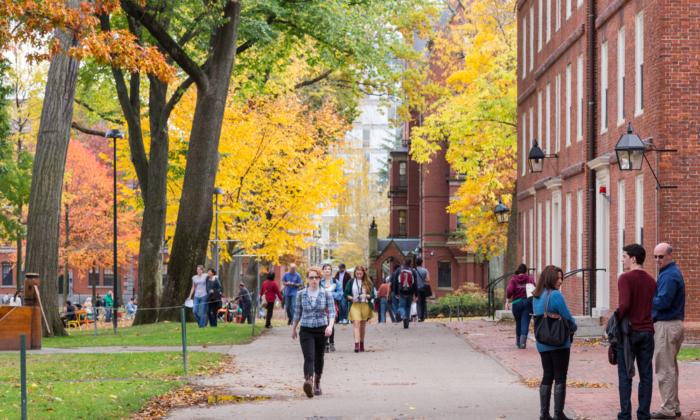Since my adolescence I have loved churchyards and cemeteries. I still find entry to them as irresistibly tempting as to bookshops.
Cemeteries are a spur to the imagination; they are an education in the tragic dimension of life and hence are a consolation.
They instill gratitude and a sense of proportion. They are often beautiful; they are peaceful havens in even the busiest or most frantic of towns or cities.
They are reserves of wildlife and, in spring and summer at least, they echo with birdsong.
The French writer, André Gide, once said that, when he went to a town that was new to him, he always visited the cemetery, along with the market, the courthouse, and the park.
A garden cemetery and monumental decoration are not only beneficial to public morals, to the improvement of manners, but are likewise calculated to extend virtuous and generous feelings. Affliction, brightened by hope, ever renders man more anxious to love his neighbour. At the brink of the grave we are made most feelingly alive to the danger of procrastinating towards God and man whatever it is our bounden duty to perform. There, too, conscience is taught the value of mercy …. There, the man whose heart the riches, titles, and dignities of the world have swollen with pride, best experiences the vanity of all earthly distinction, an humbles himself before the mournful shrine …. There, the son whose wayward folly may have embittered the last days of a father will, as he gazes upon his grave, best receive the impulse that would urge him, as an expiation of his crime, to perform a double duty to his surviving parent. There, in fact, vice looks terrible, virtue lovely; selfishness a sin, patriotism a duty. The cemetery is, in short, the tenderest and most uncompromising monitor of man ....Quite a moral education, then, is a cemetery according to Loudon; but in these times when all empirical claims are supposed to be evidence- based, I can just hear detractors of his view demanding to know what is the evidence, according to properly conducted controlled trials, that habitués of cemeteries are better people than those who never enter them.
Let not Ambition mock their useful toil, Their homely joys, and destiny obscure; Nor Grandeur hear with disdainful smile The short and simple annals of the poor. The boast of heraldry, the pomp of pow’r, And all that beauty, all that wealth e’er gave, Awaits alike th’ inevitable hour. The paths of glory lead but to the grave.Whether my taste for cemeteries derived from Gray’s poem, or my taste for Gray’s poem derived from my taste for cemeteries, I can no longer recall; perhaps the relationship was dialectical, but both tastes have remained with me.

Our Town’s Cemetery
We are fortunate that our little town in England has a beautiful cemetery, laid out by the Victorians on hilly ground, with two small stone Gothic chapels, and, rather unusually for these days, beautifully kept and maintained.In general, I have found that those employed to maintain cemeteries are conscientious and proud of their work: whether they are self-selected for it, or there is a natural respect for the dead that induces such care, I do not know.
But where cemeteries are neglected, it is by officialdom rather than by staff employed in them: and in Britain, alas, the preservation of residues and monuments of the past is often deemed of low priority by comparison with other calls on the public purse, such as saving the population from itself.
Our cemetery is beautiful, planted with trees by the Victorians that are now mature and dignified (the loss of religious belief and the pace of technological change have foreshortened out time perspective, so that few of us think of what might exist more than twenty years hence, as the Victorians did); but our cemetery is not distinguished in the sense that anyone notable is interred there, though our town was mentioned, albeit briefly, in Shakespeare.
The cemetery is not ancient either: the first burials there took place in the 1850s. Few personal achievements or even professions are mentioned on the tombstones: a wheelwright here, a former town mayor there.
The ordinariness of the town’s inhabitants and the dignity of their tombs, in granite or the soft local red sandstone, moves me. Ordinary lives were deemed worthy of memorialization, by virtue of their humanity alone.
There is the occasional obelisk, urn or broken column, presumably to distinguish the prominent citizen from the rest, though not ostentatiously so, but in the main the cemetery is testimony to our equality in death.
Though denuded of much information about the interred, many of the inscriptions on the tombs stimulate the imagination and thereby also the emotions of pity, sorrow, and gratitude.
Does grief pass, or is it merely pushed to the back of the mind, to be exhumed either at will or by accidental association?
What of the parents of a child lost at sea forty years before their own demise? What were the lives of maiden sisters, died at ages 77 and 90: were they happy and fulfilled, or sad and embittered?
William Fletcher
There is one tombstone I never fail to visit: that of William Fletcher, who died, aged 23, on July 29, 1863. Actually, the tombstone says that he “was buried at some feet distance from this stone,” which marked the grave of his father who died aged 53 in 1859, his brother who died aged 27 in 1861 (and was buried elsewhere), and his mother who survived them all and died, aged 70, in 1870.The reason that I visit this tomb in particular is that William Fletcher kept a diary for a few years, printed in 2009 and edited by Jane Killick. He was not an extraordinary young man, but an intelligent, decent one, pious, a little snobbish and occasionally priggish, but also an enjoyer of ordinary pleasures.
I should not stoop to notice the conduct of his wife when I went into the shop on Wednesday night (I went to say good bye and she turned her back on me and went away) for it only displayed the profoundest ill-breeding, and indicated too strongly to be mistaken, the quarter she sprang from. What a pity a brother of mine should have got into the clutches of such a woman.It is the very ordinariness of this, and the fact that such events still happen and such sentiments are still expressed today, that is reassuring: daily life goes on, and its small change does not vary very much.
This is not to say that William was entirely unaware of the wider world. He attempted to improve himself by reading David Hume’s “History of England” and books of algebra and grammar.
He sometimes commented knowledgeably on world affairs—it is startling to realize that foreign affairs were more extensively reported in the local newspaper (still in existence, but much narrower in focus) than in the New York Times today.
William’s father was a preacher of the Catholic Apostolic Church, a sect that at the time believed in the imminence of the Second Coming. On the day of his death, he gave William a book of sermons and said to him, “God bless them [the sermons] unto you, you’ll find many important truths in that book.”
William, a regular congregant, worked as a clerk in a local bank, founded in 1810 that, by a long successive series of mergers, became part of HSBC, whose local branch remains in the same building.
William must have been an honest and trustworthy young man, for he it was who was chosen to transport on horseback the equivalent of $150,000 in gold and silver coin to a much larger town fourteen miles away.
Engaged a bed at Suffield’s… Just when I was congratulating myself that I was the sole occupant of bed, I was convinced otherwise and immediately got up and dressed—rang the bell and told them that I couldn’t sleep there. I was removed into another room—a double bedded one, where I surprised some old fogy, who had just woke up. There I met with another nuisance. The old bloke snored to that degree that he must have been heard in the street—worse than ½ doz pigs I can safely say. I couldn’t suppress a laugh at the predicament. However, I got 3 or 4 hours sleep.But his life was tragic, even if the conditions of the time prepared him for tragedy in a way that we are not prepared for it. On Sept. 29,
Young Culwick is very ill—stoppage [presumably of the gastrointestinal tract]. I offered a prayer for him beseeching God to restore him and, in the event of His seeing good to take him away, that He would in his mercy receive him into rest.The next day, “Poor Culwick’s spirit took its flight at 3 o’clock this morning. What an awfully sudden change! This day week he was at his usual work. May I be prepared, O God, whenever it shall please Thee to take me hence.”
In fact, poor Culwick’s end prefigured his own. In the local newspaper for 1 Aug., 1863, we read that “‘tis our painful task to record the death of Mr W. Fletcher, of this town, under the most melancholy of circumstances …. On Wednesday last, he left his residence … apparently as well as usual, he called at Mr Hopwood’s … and asked to see a Stereoscopic view of the Cemetery, and was just pointing out his father’s grave, when it is supposed that agitation of feelings brought to an instantaneous close ‘life’s struggle’”
But the close was not quite instantaneous: poor William coughed up blood for fifteen minutes before expiring.
This tomb reminds me how fortunate I have been, without having done anything to deserve my good fortune, any more than William Fletcher deserved his ill-fortune. True, my life has been effortful, at least after my mid-thirties (I was lazy before); but without fundamental good fortune, my efforts would have been in vain or perhaps I would not even have made them. Much is within our control and much is without it. A cemetery is a salutary lesson in modesty.

Startling Vulgarity
The cemetery is so beautiful that it must once have given a dignity to death and consoled those who knew or intuited that their end was near.Today, the dignity which should be given and accorded to those who grow old or those who die has been reduced to considerations of giving the minimum physical comforts to those no longer economically productive, and of disposing of the refuse once life is extinct…. They apprehended the problems with gusto and realism—a realism that we should be well advised to study as lessons for our own half-hearted approach to death.In short, if death is nothing, life is nothing.
Saint Michael’s Kirkyard
Just how great a work of art a cemetery can be is demonstrated in his most recent book, “Saint Michael’s Kirkyard, Dumfries: A Presbyterian Valhalla.”As with Venice, the whole is greater than the parts: we are here far from the egoistic notion of the self-proclaiming iconic building of the modern starchitect. True, by modern standards the tombs are grandiose, elaborate exercises in uselessness from a purely utilitarian point of view. Local worthies such as merchants, lawyers, doctors or town officials, once eminent but now forgotten, are commemorated as if they had been world-historical figures. The Scots, with their reputation for a rather dour plainness in life, suspecting the ordinary pleasures as moral snares, allowed themselves extravagance in death, at least in Dumfries. And unlike my local cemetery, St Michael’s kirkyard is the last resting place of one towering figure, that of Robert Burns, the ploughman poet, the national bard of Scotland.The book’s many photographs at once induced in me a desire to make a pilgrimage there. Professor Curl’s immensely erudite disquisition on the memorials (with amusing, acerbic footnotes drawing attention to the almost fervent ideological philistinism of the present day) would be an indispensable guide.
A visit to the kirkyard would not be merely an aesthetic or touristic experience: it would conduce to reflection on the nature of our society and the current state of our culture, even on questions of political philosophy. The kirkyard, which has been a burial place for so many centuries that the level of its ground is raised, did not come about spontaneously, though it was not the fruit of an overall design either. As Curl makes clear, this immense accumulation of noble monuments could only have taken place in a society—that of South-West Scotland, predominantly rural, of which Dumfries was the local metropolis—that not only possessed and had trained, but recognized and valued, designers and craftsmen of the highest caliber. This was a society of aesthetic discrimination and it is unlikely that anything of a similar grandeur (size, I need hardly add, is an entirely different matter) could be produced today, even if anyone desired to produce it.
Of course, a social utilitarian would no doubt object that an impoverished society—impoverished by our standards, that is—that expended so much effort, energy, talent and resources on memorializing the dead, most of whom would inevitably have been forgotten within three generations, was misapplying its resources, or misallocating capital as woefully as any socialist society. It would have been better if it sought to alleviate poverty than to raise up monuments of a sumptuary nature. Robert Burns himself, after all, had struggled much of his life with poverty, and indeed died young, possibly of a disease (heart failure consequent upon rheumatic fever) that was in part attributable to that poverty. Moreover, the kirkyard monuments were clearly those of an upper crust of a stratified society: class distinctions persisted even after death because not everyone could be buried equally. How much effort had been misdirected when there was so much suffering—of a frequency and intensity quite unknown today—to be alleviated!
Thus we learn to despise or excoriate the past for its wrong scale of values. How could anyone have thought to spend the equivalent of a farm laborer’s annual income (on which he had to keep an entire family) on a mere gravestone? Let the dead bury their dead: resources are for the living, especially for those without resources. How superior, morally, is our sensibility! At last we have found, or developed, a true scale of values.
Every age has a tendency both to decry and to congratulate itself. Those who suppose that we have at last found a true scale of values are apt to overlook the fact that, had the obsession with social justice, equality of outcome and so forth, existed from the outset of history, we should have been bequeathed nothing from the past that we value today, all of which is vulnerable to the criticism that it was the product of an unjust society.
A modern fanatic might be defined as someone who looks upon Angkor Wat, or the Taj Mahal, or Chartres Cathedral, and thinks, ‘Social injustice!’ But civilization is more than the fulfilment of a few moral injunctions or imperatives.
We are inclined to forget also that future ages my look back on us and our moral deficiencies with horror and wonder how we could have overlooked such evident injustices and moral horrors, how our scale of values could have been so distorted. We have our own departures from utility as conceived of by utilitarians, but few, I think, that will be as admirable as the St Michael’s Kirkyard of Professor Curl’s book, which is a monument not only to individuals, but to a society with a fine aesthetic sense and proper appreciation of grandeur, now entirely lost or replaced by a vulgar meretriciousness.






